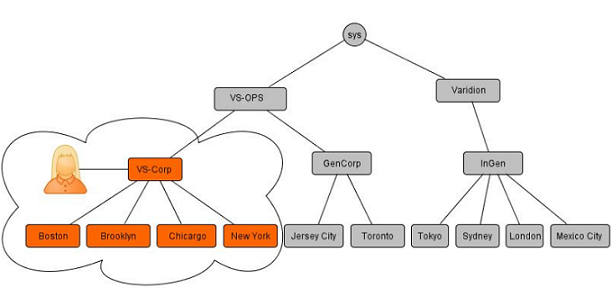Data Partitioning¶
Data in the multi-tenant system is “partitioned” by a means of fully configurable hierarchy nodes. In the example below, the system hosts two managed service providers “Varidion” and “VS-OPS”. “VS-OPS” hosts two customers: “VS-Corp” and “GenCorp”. “VS-CORP” in turn operates from locations Boston, Brooklyn, Chicago and New York.

The system has the ability to model the hierarchical nature of various businesses and manage the allocation of infrastructure (such as network devices - refer to the topic on Network Device Lists.), users and other entities in the system by creating hierarchy nodes, hierarchy node types (for example: provider, reseller, customer, shared building, site, division, branch, and so on) and hierarchy rules (for example: a site can only be created under a customer) that can be applied to various models in the system.
Devolved administration is enabled by creating administrators with different roles for different types of hierarchy nodes. For example:
- An administrator is responsible for the setup of the overall system.
- Provider administrators own and manage infrastructure and define services available to resellers.
- Resellers offer the infrastructure and services to customers or enterprises.
- Customers and enterprises are grouped into various groupings.
- Groupings such as divisions or branches belong to customers.
- Physical locations hold users and phones.
- End users consume services and manage their own configurable settings.
The flexible mechanism is used to define as many levels as needed. Hierarchy node instances of different types can be created and the required business rules can be defined.
